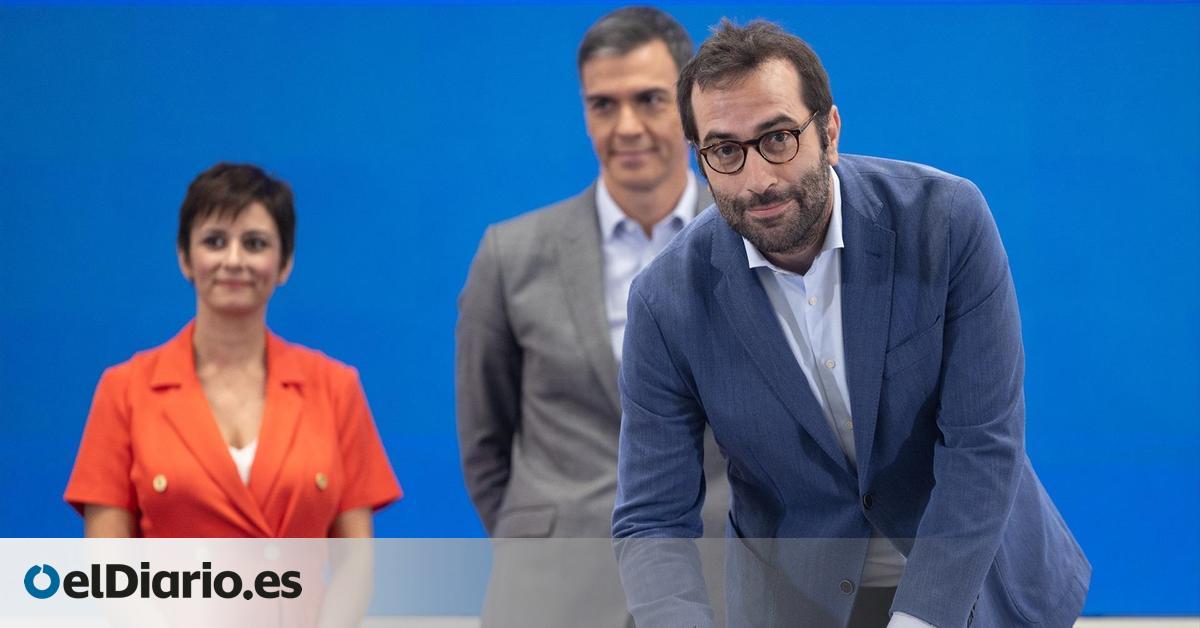
The economy has once again surprised positively with a growth of 0.8% in the second quarter, compared to the previous quarter, according to the INE (National Institute of Statistics) on Tuesday. The GDP (Gross Domestic Product) growth is equal to that of the first quarter – when it also surprised on the upside with 0.8% – and remains the most notable among the main eurozone partners. In the same period, the combined GDP of the eurozone partners increased by 0.3%. Germany’s GDP contracted by one tenth.
The forecasts of the Government and most institutions and analysis centres indicate that economic activity in our country will grow by 2.4% for the year as a whole, leading the developed countries. Although this projection could once again fall short. “This growth remains balanced, with a very positive contribution from our foreign sector. [incluye el turismo] and a progressive moderation of prices,” says Carlos Cuerpo, Minister of Economy, Trade and Business.
In fact, this Tuesday it was revealed that inflation fell six-tenths of a percentage point in July, to 2.8% (in this case compared to the same month last year), a low not seen since February.
Despite the weakness of the eurozone partners, GDP growth between April and June is supported by the contribution of “the excellent performance of the foreign sector, which reflects the dynamism and competitiveness of our companies,” according to Cuerpo. However, the data from the National Accounting Office highlight the good performance of all branches of activity, especially the manufacturing industry. GDP is already 4.7 points above the pre-pandemic level.
On an interannual basis, GDP grew by 2.9% in the second quarter, compared to 2.6% in the previous quarter. Domestic demand contributed 2.0 points to this interannual growth (which compares this quarter with the same one in 2023) and external demand contributed 0.9 points, according to the INE.
In the foreign sector, the tourism boom in Spain is generating what economists call “negative externalities”, the most significant of which is “rentals for tourist use” and its impact on life in the neighbourhoods of the major capitals and the main destinations for travellers and on housing market prices. According to National Accounting figures, tourism is more than 15 percentage points higher than before the historic COVID shock.
“There is a greater influx of foreign tourists outside the summer season, a greater diversification of countries of origin and an increase in average spending per tourist. Tourism GDP, which measures the economic contribution of this activity to the GDP of the Spanish economy, rose to almost 13% of total GDP in 2023, exceeding pre-pandemic records,” summarises a recent report by the Independent Authority for Fiscal Responsibility (AIReF).
Tourism is once again a key factor in the importance of the foreign sector in terms of overall activity and employment. However, other services have joined this ‘engine’ of the economy. “Exports of other non-tourist services remain highly dynamic,” the AIReF document continues, and this has been corroborated by the data for this last quarter.
Throw away consumption and throw away investment
Private consumption, for its part, has been boosted by gains in purchasing power and the evolution of employment. Meanwhile, investment has increased – one of the greatest weaknesses of our economy in this phase of expansion – especially in capital goods and housing.
As can be seen in the penultimate graph of this report, public consumption remains stable, despite the return of the European Union (EU) fiscal rules, although it is true that it no longer shows the high growth rates of previous quarters.
The weakness of business investment (in the last graph) is one of the major uncertainties regarding the evolution of the Spanish economy. Much of future growth depends on investment, and some sectors have not been able to wake up since 2020. Mainly, due to the increase in the cost of credit caused by the interest rate increases of the European Central Bank (ECB).
Not even with the stimulus provided by the deployment of the Recovery Plan, which has also been subject to uncertainty regarding its real impact on activity. This Friday, the Government announced the disbursement by the European Commission of the fourth payment of European funds.
In this context, one of the investment destinations stands out above the rest, and as never before: that of “intellectual property products” —in the language of the INE—, directly related to innovation, research and high added value sectors.
“These figures, together with the excellent development of employment, which has allowed us to reach a record of more than 21.6 million people in employment, confirm the strength of the Spanish economy, with strong and balanced growth, higher than that of our main partners,” said the Minister of Economy.
“There is still much work to be done, but the reforms and economic policy measures are allowing us to maintain excellent macroeconomic data, which are also being transferred to micro data, improving the economic situation and prospects of families and companies,” concludes Cuerpo.
Not all is good news. The problem of access to housing, directly related to the stagnation of construction, the suffocation of inflationthe still high structural unemployment and the inequalities of wealth and gender overshadow the ‘macro’ achievements. Meanwhile, companies, the most orthodox analysis centres and neoliberal visions focus their criticism on the weak growth of labour productivity, with which they deny the proposals to reduce the working day, to continue increasing the Minimum Wage (SMI) and the rest of salaries or to reinforce taxes on the profits of companies to improve the conditions of households and the Welfare State and public services.
Source: www.eldiario.es

